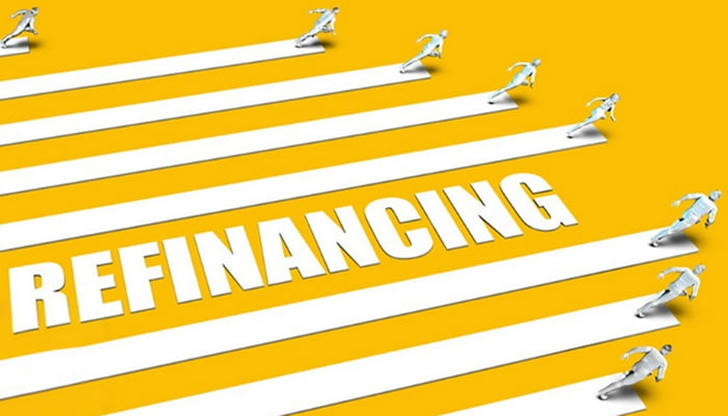How to Refinance Your Student Loans in 2025 and Save Thousands

Student loan payments are back, and for many borrowers, the pressure is real. With interest rates rising and monthly bills stacking up, refinancing your student loans in 2025 might be one of the smartest financial moves you can make. Done right, refinancing can lower your interest rate, reduce your monthly payments, and help you save thousands of dollars over time. Here's a practical guide on how to do it—and what to watch out for.
What Is Student Loan Refinancing?

Student loan refinancing means replacing one or more existing loans with a new loan from a private lender. The new loan comes with a new interest rate, new terms, and ideally, better repayment options.
For example:
If you owe $40,000 at a 7% interest rate and refinance at 4.5%, you could save over $5,000 in interest across 10 years. That’s real money back in your pocket.
Why More People Are Refinancing in 2025

Several reasons make this the right time:
Federal payments resumed in late 2023, ending the pandemic pause.
Interest rates are fluctuating, but many private lenders still offer competitive deals.
Many borrowers are no longer eligible for federal relief and are looking for alternatives to manage their debt.
If you’re struggling with high monthly payments or just want a better deal, now is the time to explore your options.
Is Refinancing Right for You?

Refinancing works best if:
You have good credit (typically 670+) and a stable income.
You don’t plan to use federal programs like Public Service Loan Forgiveness (PSLF) or Income-Driven Repayment (IDR).
You want to lower your interest rate or pay off your loan faster.
You prefer simplified payments—combining multiple loans into one.
However, if you rely on federal protections, refinancing may not be worth it. Once you refinance with a private lender, you give up all federal loan benefits.
How to Refinance Your Student Loans in 5 Simple Steps
✅ 1. Check Your Credit Score
Lenders want to see responsible financial behavior. If your credit score is below 670, work on improving it or consider applying with a co-signer.
✅ 2. Compare Lenders
Don’t settle for the first offer. Use comparison tools like Credible, SoFi, Earnest, or Splash to find the best rates and terms. Focus on:
Fixed vs. variable interest rates
Loan term options (5–20 years)
No hidden fees
Reputation and support
✅ 3. Get Prequalified
Most lenders let you check your rates with a soft credit check, so it won’t hurt your score. This gives you a sense of what’s available before committing.
✅ 4. Apply
Once you find the right offer, submit your full application with documents: ID, income proof, and existing loan details.
✅ 5. Keep Paying Until It’s Finalized
Your new lender will pay off your old loan directly, but don’t skip payments until you get confirmation that the refinance is complete.
Where You Can Refinance (Popular Lenders in 2025)
Here are a few trusted lenders offering student loan refinancing:
SoFi – Offers career support and unemployment protection
Earnest – Flexible payment terms and no fees
Laurel Road – Great for healthcare professionals
Credible – This Lets you compare multiple offers at once
Splash Financial – Competitive rates and quick process
Always check for the most updated terms on each platform.
Mistakes to Avoid When Refinancing
Refinancing can save you money—but only if you avoid these common mistakes:
❌ Refinancing Federal Loans Without Caution
Federal loans offer valuable benefits like Income-Driven Repayment (IDR), Public Service Loan Forgiveness (PSLF), and forbearance options.
Once refinanced with a private lender, these protections are gone for good. If you work in public service or might need flexible repayment in the future, hold off.
✅ Tip: Consider refinancing only your private loans and keeping federal ones as-is.
❌ Choosing Variable Rates Without Understanding the Risks
Variable rates may seem attractive at first, but they can increase over time—raising your monthly payments unpredictably.
For most borrowers, a fixed rate offers more long-term stability, especially if your income isn’t highly flexible.
✅ Tip: Compare long-term costs of fixed vs. variable rates before deciding.
❌ Overlooking Fees and Fine Print
Many trusted lenders charge no origination or prepayment fees, but not all are transparent. A low interest rate can be offset by hidden costs.
Always check the full APR, loan terms, and any additional fees.
✅ Tip: Stick to lenders that clearly list all terms and offer repayment flexibility.
❌ Falling for Scams
Beware of refinance offers that ask for upfront payments, guarantee approval, or pressure you to act fast.
Use only well-reviewed, established lenders like SoFi, Earnest, or Laurel Road, or comparison platforms like Credible.
✅ Tip: Check BBB ratings and customer reviews before applying.
❌ Ignoring the Long-Term Math
A lower monthly payment might mean a longer term and more interest paid overall.
Don’t just focus on short-term relief—look at total repayment costs to see if you’re truly saving.
✅ Tip: Use a refinance calculator to compare total loan costs before making the switch.
Real Example: How Much Can You Save?
Let’s say you owe $50,000 at a 7% interest rate over 10 years. If you refinance to 4.5%, you could save over $6,000 in interest—plus your monthly payment would drop by over $50.
If you refinance for a shorter term (like 7 years), you may pay more each month but save even more in total interest.
Final Thoughts: Take Action Now
Refinancing your student loans in 2025 could be the difference between years of stress and real financial progress. It’s not the right move for everyone, but if you have strong credit, a steady job, and no need for federal protections, it can save you serious money.
Before refinancing, ask yourself:
Do I qualify for a lower rate?
Am I giving up federal benefits I still need?
How much will I save—both monthly and overall?
If it all adds up, don’t wait. The sooner you refinance, the sooner you start saving.
